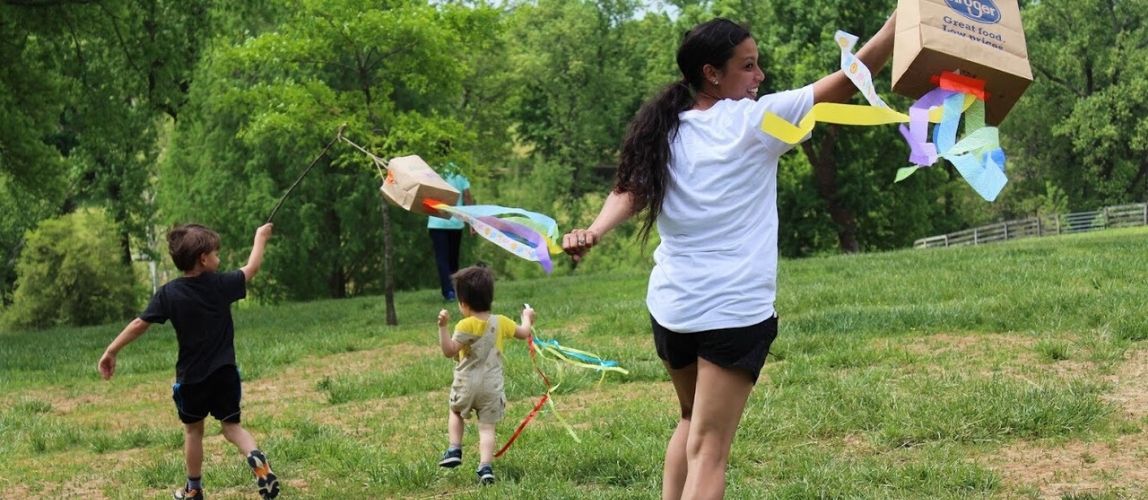Right now, the world feels terribly uncertain. But, it’s calming to feel like we can prepare our kids (and ourselves) to manage whatever our tomorrows bring.
Enter joy. What could be better than preparing for the future—and an upcoming holiday season—in a way that also captures the very best of our today? We can do it because we have the superpower of joy hard-wired inside us.
Here are five good reasons to seek and find real, in the moment, give-you-goosebumps, make-your-leap-up-and-down joy—for our kids and ourselves.
Joy helps now and in the future
Joy is defined as an experience of intense, immediate positive emotion. Although joy is something that we experience in the here and now, and may last mere moments, it benefits our bodies and our minds in lasting ways.
There is no need to maintain a constant state of happiness (visit my home around 5:30 p.m. on a weeknight, and you’ll know that would be impossible). But, you can capture and treasure moments of joy along the way. Talk about joyful moments with kids at dinner, at bath time, or just before bed—and they overshadow the bumpy parts and become what everyone remembers and treasures about their day.
Joy impacts the growing brain
Every time kids experience joy, the pathways in their brains that are dedicated to feeling this positive emotion grow stronger. Plus, we can trigger the experience of joy simply by recalling moments in which we experienced it, or just by thinking about things that make us feel joyful. So, the more our kids experience joy, the more readily their growing brain can conjure joy when they need it.
Our minds are predisposed to negative thoughts since, evolutionarily, being able to identify and avoid danger is helpful to survival. As neurologist Rick Hanson says, our brains are “like Velcro for negative experiences and Teflon for positive experiences.” Given this tendency, it’s all the more important to help kids strengthen their “joy pathways” to help them tip their emotional balance in a positive direction.
Joy is good for health and wellness
The research is clear—happiness and joy are good for our health. These positive emotions contribute to a wide range of important positive health outcomes, including improved heart health, stronger immune systems, reduced stress, and even a longer lifespan. Who would not want these improvements in kids’ health and wellness?
Joy sustains us emotionally
Although I still (and may always) shudder at the thought that any of my kids should experience pain, I do recognize that their struggles are inevitable. No matter what I do, they will feel disappointment. They will experience loss. I can prepare them, though, by cultivating their capacity to find and store up bits of joy that can buoy them when the waters of life grow rough and stormy.
“Find a place inside where there's joy, and the joy will burn out the pain.” —Joseph Campbell
Joy lives in nature
In order to support the joy hunters within, start spotting triggers for joy. Joy can hide in a wide range of places, and once you are attuned to joy, it is not so hard to find.
“Deep within us, we all have this impulse to seek out joy in our surroundings the drive towards joy is the drive toward life.” —Ingrid Fetell Lee
Not surprisingly, opportunities for joy hide in plain sight in nature. From a majestic mountain to a tiny snowflake on the tip of one’s nose, nature evokes joy.
"The sudden passionate happiness which the natural world can occasionally trigger in us may well be the most serious business of all." —Michael McCarthy, naturalist and writer
There are patterns that transfer from the natural into manmade worlds. Bright and happy colors, believed to be associated with our sense of life and abundance, make us joyful. Symmetry and orderly shapes, round or curved spaces can inspire joy too.
Put joy at the top of your list. If you want ideas, we’ve collected some of our favorites in this post about how to hunt for joy.
It goes without saying that the climate, literal and figurative, in our world feels rough—and being human is challenging. But, one thing that makes being human so marvelous is our capacity for joy. What could happen to our collective capacity to care for one another, for other creatures, for our shared home if we cultivated our capacity to find and experience joy? Let’s find out!
